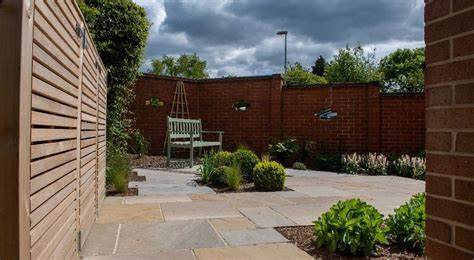Designing a low-maintenance landscaping is all about planning for a beautiful outdoor space that requires minimal upkeep. Here are key steps to consider when creating the perfect low-maintenance landscape:
1. Choose the Right Plants
- Native Plants: Opt for plants that are native to your region. They require less water, fertilizer, and pest control since they’re adapted to the local climate.
- Drought-Tolerant Species: Incorporate drought-resistant plants like succulents, lavender, and ornamental grasses to reduce watering needs.
- Perennials Over Annuals: Perennials come back year after year, reducing the need for replanting and maintenance.
2. Group Plants by Water Needs (Xeriscaping)
- Group plants with similar water requirements together to make irrigation more efficient. This practice, known as xeriscaping, reduces water usage and ensures your plants thrive.
3. Limit Lawn Areas
- Reduce Lawn Space: Lawns require regular mowing, watering, and fertilizing. By reducing the lawn area and replacing it with gravel, mulch, or hardscaping, you save time and resources.
- Ground Covers: Use ground covers like clover or creeping thyme as alternatives to traditional grass.
4. Use Mulch Generously
- Mulch helps retain moisture, reduce weed growth, and regulate soil temperature. It also adds a finished look to your landscape. Use organic mulches like bark or wood chips for maximum benefits.
5. Incorporate Hardscaping
- Patios and Walkways: Create areas with pavers, gravel paths, or stone patios that need no watering or mowing.
- Decorative Rocks: Use rocks as focal points or in dry riverbeds to break up plantings and eliminate areas that need upkeep.
6. Install an Irrigation System
- Drip Irrigation: Use a drip irrigation system to direct water exactly where it’s needed, reducing waste and cutting down on manual watering. These systems also prevent overwatering, which can lead to plant diseases.
7. Opt for Low-Maintenance Trees and Shrubs
- Choose trees and shrubs that require little pruning and are resistant to common pests. Evergreen shrubs like junipers and boxwoods, or flowering shrubs like hydrangeas, are excellent options.
8. Plan for Low-Maintenance Borders
- Use edging materials like stone, metal, or plastic to keep flower beds neat and prevent grass from encroaching, reducing the need for regular trimming and weeding.
9. Install Outdoor Lighting
- Solar-powered outdoor lights require no wiring and automatically turn on at dusk, adding beauty to your landscape without increasing your energy bill or requiring maintenance.
10. Minimize Weed Growth
- In addition to using mulch, install landscape fabric beneath pathways and garden beds to block weeds from sprouting.
11. Create Zones for Outdoor Living
- Dedicate space for outdoor seating, fire pits, or dining areas. These spots often use hardscaping, which is easier to maintain compared to green spaces, while also enhancing functionality.
12. Plan for Seasonality
- Include plants that provide year-round interest, such as evergreens, or those with different blooming periods to avoid needing seasonal refreshes or replacements.
